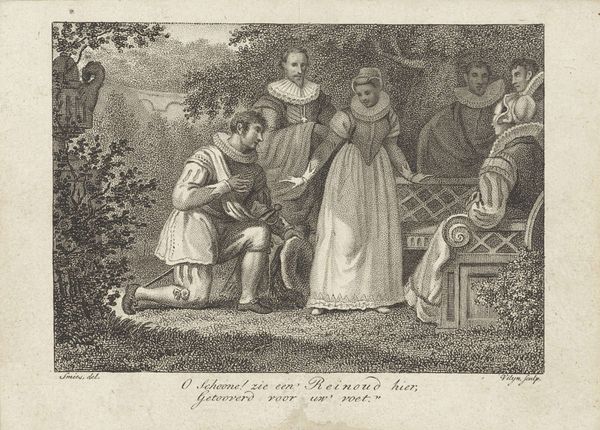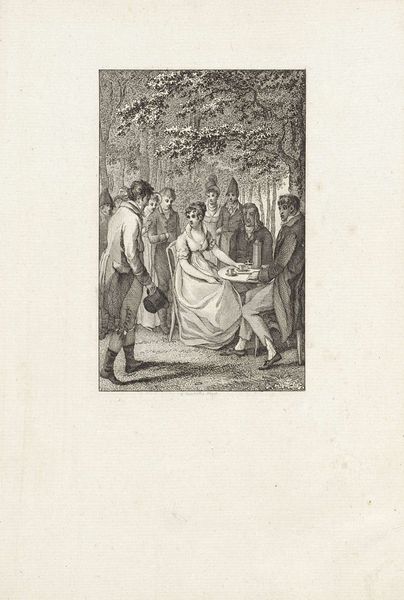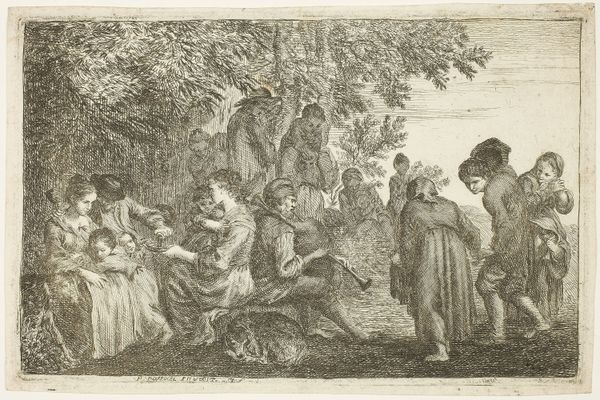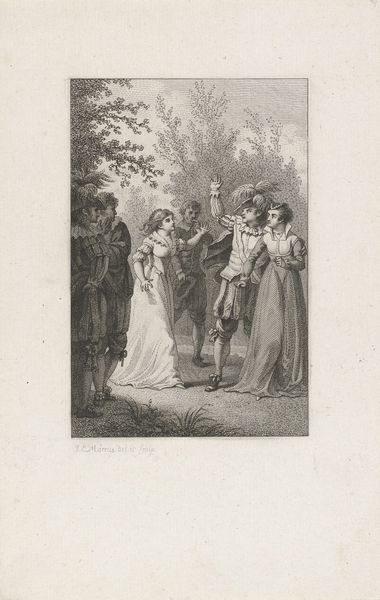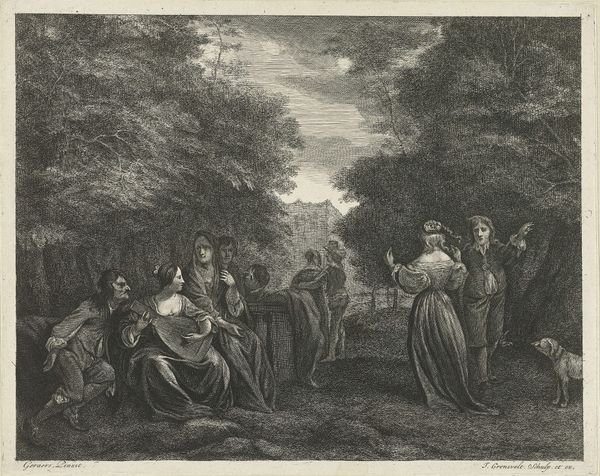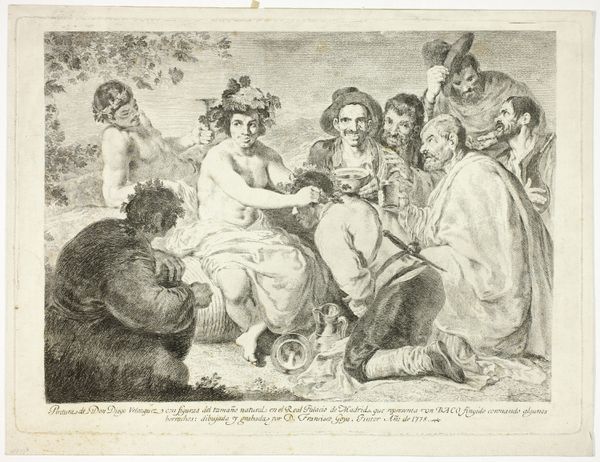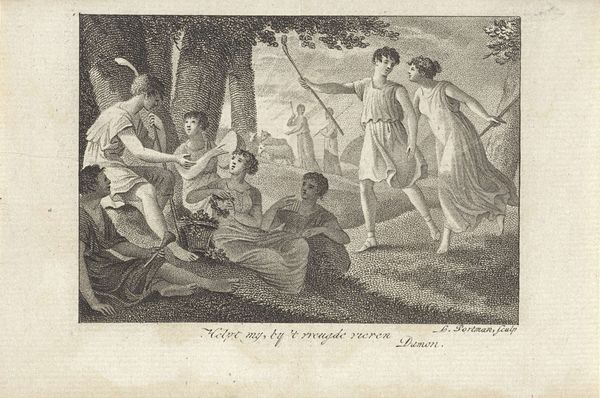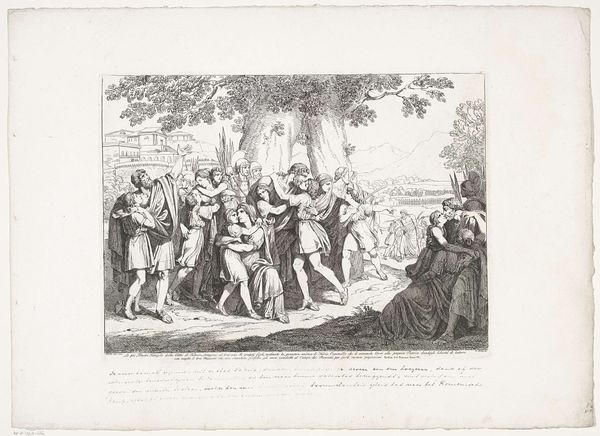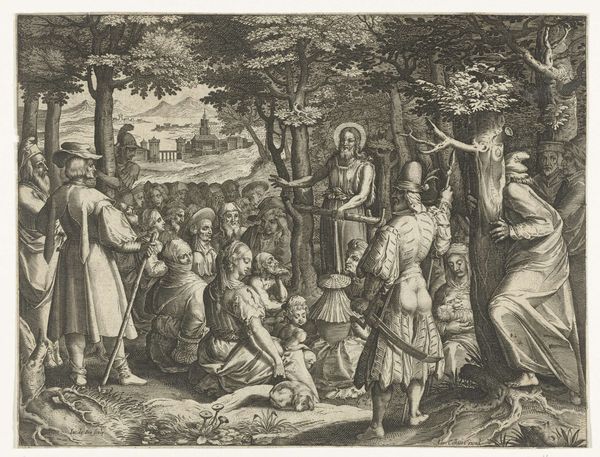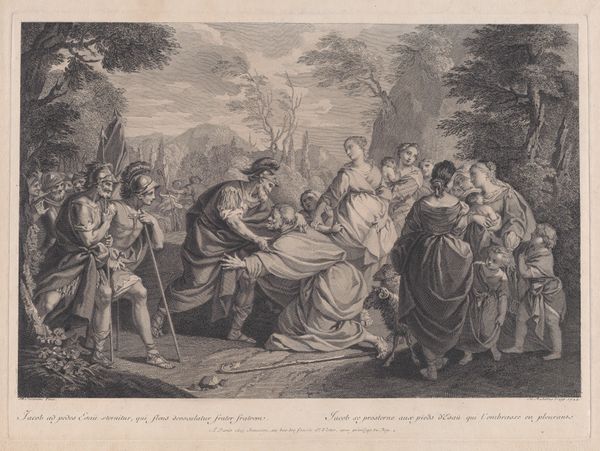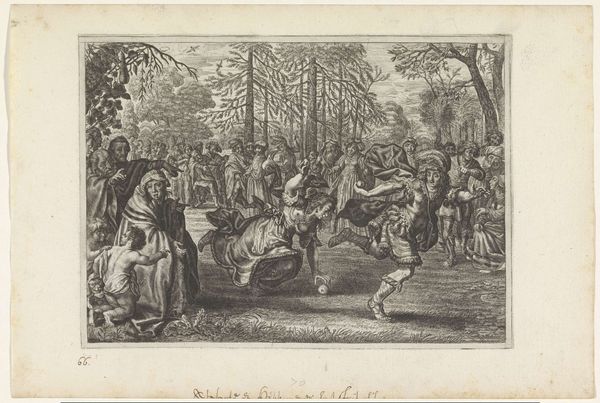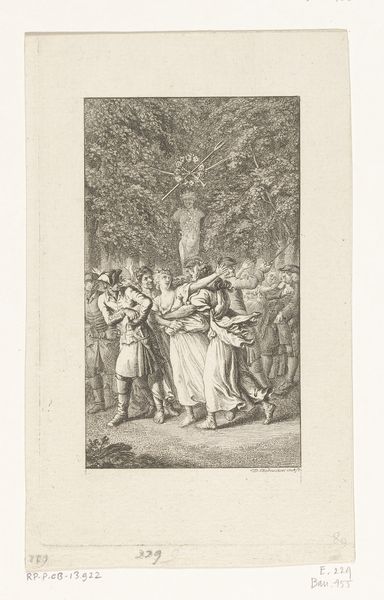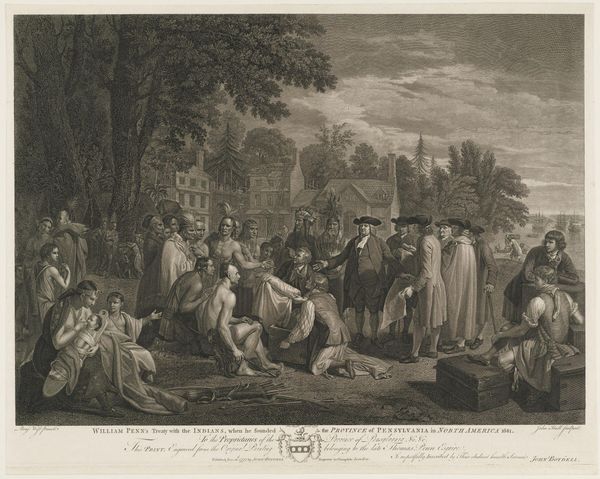
engraving
#
garden
#
old engraving style
#
landscape
#
figuration
#
old-timey
#
romanticism
#
19th century
#
line
#
genre-painting
#
engraving
Dimensions: height 99 mm, width 139 mm
Copyright: Rijks Museum: Open Domain
Curator: Looking at this engraving from 1811, "Gezelschap in een tuin met in het midden een vrouw" – translated to "Company in a garden with a woman in the middle" by Philippus Velijn – the initial impression I get is one of societal formality, everything feels so posed. Editor: It does seem stagey. The garden setting is bucolic but the rigid compositions within imply something much more controlled. The lines are incredibly crisp, typical of an engraving, providing great definition. Curator: The figures, especially the central woman and the gentleman beside her, do convey that sense of rigid expectations – they are acting out prescribed social roles. What are the underlying societal tensions being negotiated here? This is perhaps a proposal scene. Do you see how the older man seemingly "gives away" the woman to a younger man, seated on a bench on the left, with arms full of flowers? Editor: That dynamic, that symbolic exchange is fascinating. And, consider the light: there's an evenness across the scene, preventing strong contrasts or shadows that could imply deeper emotions. I’d say the light supports the even tone, perhaps signifying the constrained possibilities represented. The romantic style seeks to idealize a past which, in truth, never existed. Curator: I agree. Romanticism tends to focus on surface presentation while downplaying true human struggles. There is also that cluster of children peering over shoulders behind, perhaps they represent some idealized view of future generations as shaped by that central female figure? It certainly hints at continuity of social roles and domesticity. Editor: It's so self-consciously posed, like a meticulously planned theatrical tableau. Everything points to the composition dictating narrative meaning. Even the lack of color in the engraving pushes one towards the graphic quality and design, as opposed to the feelings displayed. Curator: Indeed. Even in its simplicity, there’s a profoundness here as a statement of prescribed social codes and cultural expectations of the era. Thanks for shedding a formal lens on these symbolical structures. Editor: Likewise! It's been enlightening exploring its narrative constraints within those structured lines.
Comments
No comments
Be the first to comment and join the conversation on the ultimate creative platform.
